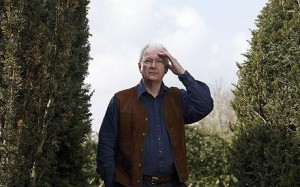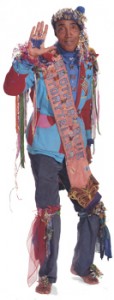
“I was never very good at literary analysis,” John Locke declares in an episode from Season 2 of Lost. The writers for the series, on the other hand, seem determined to load the series with literary references. Sawyer, the hardbitten conman, turns out to be a voracious reader, devouring everything from Watership Down to A Wrinkle in Time.
The series builds on one of the most celebrated literary tropes: survivors on a deserted island. Will they descend into savagery or rebuild civilization? The premise takes us to the heart of questions about human nature and the human condition and has functioned as the inspiration for literary thought experiments for writers ranging from Daniel Defoe (Robinson Crusoe) to William Golding (Lord of the Flies). The title Lost might also be seen as an allusion to the lost boys in J.M. Barrie’s Peter Pan, another narrative about adventures on an island.
Let me explain my own addiction to Lost, which started with a recommendation from my son and developed into a full-blown compulsion when I came down with the flu last week and found myself unable to concentrate on the written page. I went through all 24 episodes of Season 1 in 3 days. The last time I had become so immersed in an Otherworld was while reading Philip Pullman’s His Dark Materials, an experience that may have been richer and deeper but no more enthralling (blame the depleting effects of a virus). That made me wonder about the relationship of new visual media, particularly those that appear in serial form in much the way that Dickens’ novels were once packaged, to the novel.
We now know that new media never really break with old media and that they relentlessly recycle and refashion older technologies in the process of cultural production. Lost is full of allusions to writers and philosophers. There is John Locke and Danielle Rousseau, but also Edmund Burke and Hume. And there are debates about Dostoevsky and Hemingway, along with references to works ranging from The Odyssey and Alice in Wonderland to The Turn of the Screw and Of Mice and Men.
Astonishing to me was the number of references to stories for children.* Alice in Wonderland is almost de rigueur these days, and it did not surprise me to find an episode called Through the Looking Glass or talk about Wonderland. But I did sit up and take notice when The Turn of the Screw appeared on a bookshelf, when Hurley corrected Sawyer’s pronunciation of Babar, and when a character named Henry Gale showed up (an allusion to Dorothy Gale’s Uncle Henry in The Wizard of Oz) and claimed to have reached the island by a hot air balloon (the Wizard of Oz is also an aeronaut).
Why all the literary allusions in a visual medium? Well, for one thing, Lost was created by writers who are inserting themselves into a storytelling tradition with deep roots in print culture. And by paying homage to stories from the Age of Gutenberg, they are in a sense establishing their cultural legitimacy and revealing themselves to be defenders of the literary tradition rather than rivals of it. In aiming to create a new mythology, Lost also draws on biblical discourses and resorts to bricolage to create its own foundational story about origins and meaning. The discussions about faith versus reason and meaning versus nothingness may feel reductive but the premise itself demands them.
*Sawyer (note the name!) is an unlikely expert in children’s books, but in Season 2 he refers to Pippi Longstocking as well as Little Red Riding Hood.
For more on literary allusions in Lost, see http://www.losttvfans.com/page/Literary+Allusions








